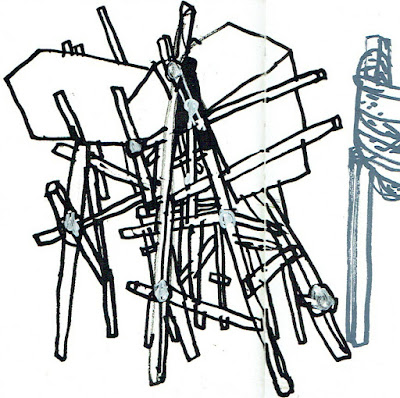There are times while visiting an exhibition when the temptation to draw what is on display becomes too great. As well as making me look at works much more closely than perhaps I would otherwise, drawing exhibits in the sketchbook is a way of taking some of the experience home, an experience that can perhaps dissipate too quickly otherwise. Sifting through my books I realise that I have quite a few of this kind of drawing, although some are inevitably more successful than others.
This was brought into stark relief when we visited the Bridget Riley show at the Hayward Gallery recently: her clinical lines and optical effects and my organic ink swipes don't really work well together. My drawing of her massive Composition with Circles 4, 2004 (above), for instance, lost everything of her original rhythmical arrangement, resembling little more than an array of cack-handed circular tea cup stains, but the process of making it made me look closely at her work's structure – or at least a part of it. It's a process that makes you ask questions about a work, spend time with it, and stops the eye just gliding past. Sometimes it's about more than just the drawing.
I've included some other drawings of works I've encountered at recent exhibitions:
Phyllida Barlow's untitled: blocksonstilts, 2018-19 at the Royal Academy in May 2019 (top image),
Cornelia Parker's Transitional Object (PsychoBarn) at the Royal Academy's courtyard in November 2018,
There are more of my drawings on Instagram.






No comments:
Post a Comment